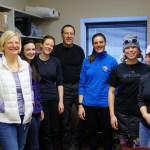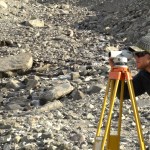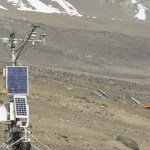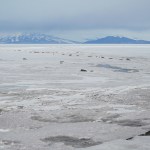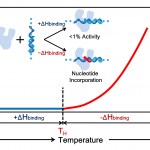Knoxville '82: Where Miscellany Thrive
One of the cowboy science teams (or cowgirl science team – see photo) that I was able to spend some time with at McMurdo Station is the Weddell Seal Research Team under the direction of Dr. Jenn Burns of the University of Alaska. This multi-faceted science team spends virtually every single day during their field season tracking down tagged Weddell seals on the Ross Ice Shelf and performing a gigantic battery of physiological tests and measurements on them. Every day this group is either in helicopters (less frequently) or out on snow mobiles (more frequently) re-capturing animals that they…
The Martian is a feel-good, science positive, uplifting film about the power of the human spirit, botany, and engineering. It looked, from the credits, like it had at least 8 scientific advisors from NASA (and possibly other places). Too bad that Ridley Scott only half listened to them. As one of the primary sci-fi filmmakers working today, it’s kind of amazing how a lot of the science in Ridley Scott’s films sort of leaves a chalky taste in the mouth. (Take a look at this link for a scathing review of the science in Prometheus).
It’s clear that The Martian is science-positive – the main…
Hi. Apologies for the radio gap. It turns out that Trish, the co-PI and irresistible force behind this project met with an immovable ice patch and broke her femur a few days ago at the Willy Field airport on the Ross Ice Shelf. She’s “fine” now, and freshly bionic-ized with new hardware pinning together her skeleton. Oh, and we got the shot, out at the airport, while her femur was still in two parts (a shot of one of the C-130 planes framed similarly to a Ponting photograph of the Terra Nova at dock).
Trish’s own experience underscores the originally intended topic of this particular post:…
Internet Links and Social Links at McMurdo Station, Antarctica.
Here are some links of interest related to Trish Suchy and my NSF Antarctic Artists and Writers Project:
Trish Suchy’s blog about our Artist’s and Writer’s project.
David Ainley’s website about his research on Adelie penguins: Penguin Science
The weather in McMurdo is here.
Zach Sudman’s blog (who we photographed in the Dry Valleys):
And here is the blog of Shaun O’Boyle, one of the Artists & Writers who was in McMurdo immediately before we were. He was/is doing a beautiful black and white photography project on McMurdo.
One…
Our most recent helo trip out from McMurdo on our NSF Artists & Writers Project took us to Cape Evans, the site of Robert Scott’s Terra Nova Hut, where they based their 1910-1913 trip to the South Pole. We went with Anthony Powell (the filmmaker from Scott Base who made the movie “Antarctica: A Year on Ice”. He has an engineering/tech “day job” at Scott Base and is a moviemaker in his off time). The Terra Nova Hut is the most elaborate and extensive of the 3 main historic huts in the McMurdo-ish area (the other 2 are Discovery Hut, right at McMurdo, and the Shackleton Nimrod Hut at Royds…
On the next leg of our NSF Antarctic Artists & Writers project we flew to the Antarctic Dry Valleys from McMurdo. It is almost an hour helicopter ride across the ice shelf, and we hopped from site to site all day: landing at Lake Hoare for a moment to drop off someone and pick up Zach Sudman, a stream hydrologist who we spent most of the day with. We flew with Zach another 10 minutes to Lawson Stream – yes a flowing stream (from summer glacier melt) in the Taylor Valley. We video photographed Zach Sudman using surveying equipment to measure the height of the lake and the stream.
Here is a…
As part of our project we just flew to Cape Royds on a helicopter to take photographs of Dr. David Ainley among the penguins he’s studied for many years. It is about a 10 minute helicopter ride from McMurdo. We arrived in strong winds (maybe 30 mph? – enough to stop you from walking and have to brace yourself from being blown backward during gusts). The helicopter dropped us off and left, and after a short walk we arrived at Shackleton’s Hut (the nicest of the main huts on Ross Island). It’s beautiful and warm inside the hut. Despite the wind it feels comfortable and cozy inside, with lots of…
Hello again,
We’ve been on Mars – er, I mean in Antarctica for 1 week now. It’s similar to what one might imagine being on Mars is like, but with breathable air (nice air). The landscape around McMurdo Station is all volcanic rock. Rock and dirt everywhere. Stand in the middle of McMurdo and spin around and you’ll see about 230 degrees of rock and dirt as far as the eye can see, and about 130 degrees of extraordinary beauty looking across the Ross Ice Shelf toward the Trans-Antarctic Mountains. Right across from the station, shown in the picture, is Mount Discovery (slightly obscured in…
It's time again for John Bohannon's annual "Dance Your Ph.D." contest. This year, in my opinion, there are even more high quality entries than in previous years! (I was one of the judges who did the first round of choices...the "winners" were then chosen by a panel that includes several professional dancers (for several years it has been members of Pilobulus)). And they are all now posted online ("winners" at the link above - all the videos are posted here - because really they are ALL winners in my opinion.
And if you can come up with more difficult ways to try to…
Our lab has a paper called: "Enthalpic Switch-Points and Temperature Dependencies of DNA binding and Nucleotide Incorporation by Pol I DNA Polymerases" that was just published in BBA (Biochimica et Biophysica Acta): Proteins and Proteomics. The study follows up on an observation and prediction we had made some years ago in a different paper.
The study deals with quite a lot of rather detailed thermodynamics of DNA binding (free energy, enthalpy, entropy, heat capacity…) and looks for correlations between such thermodynamic measurements of binding and the functional behavior of a couple…
This summer I am working with a student on trying to start to get some reasonable assessment of one of our ongoing oddball-ish outreach projects. Working with a local videographer, we've been making 2 minute mini-profiles of astrobiologists who work here at LSU (Louisiana State University) - two minute summaries of who they are, what they work on, and why they work on it. Rather than do the seemingly most typical "talking head" style of video, we've tried to do something that more resembles a mash-up between Bill Nye and Independent Film (yes, it is difficult to do that in your…
I recently spent a week in Lithuania visiting biophysical laboratories and giving a couple of seminars. My host was Daumantas Matulis of the Institute of Biotechnology at Vilnius University, where they have an EU grant that includes funds for bringing in visiting scientists from other countries (thank you EU!). Although my sampling of the science in Lithuania is quite limited – the labs that I visited exhibited some interesting similarities. Physically, the labs at the Institute of Biotechnology in Vilnius and in the Institute of Cardiology in Kaunas consist of large collections of small…
A news story in ScienceNOW this week describes how City University of New York is planning to rearrange its "General Education" requirements so that non-majors who take science don't have to take lab courses anymore. Scientists at CUNY are, predictably, annoyed and upset. Even non-majors should get to muck around in lab with their own hands a bit before going off to whatever other majors and interests they have.
Here at LSU we've been discussing almost the Exact Same Issue in the Honors College for the past few weeks and coming to the Exact Opposite Conclusion to CUNY. We are re-designing…
Yanling Yang, who just graduated with a Ph.D. from my lab, has a paper in the just published November issue of Biophysical Chemistry. The entire issue of the journal celebrates the 25th Anniversary of a conference called "The Gibbs Conference on Biothermodynamics", and each of the papers is from the laboratory of one of the organizers of one of the previous 25 annual meetings (I co-organized #24). Despite the restricted invitation list, however, all the papers were peer reviewed (some quite viciously according to reports) and some required several months of revisions to qualify for the…
The "Dance Your Ph.D." contest is on again for 2011. This unusual and highly interesting experiment in science outreach continues to be shepherded by John Bohannon, and continues to attract new sponsors -- this years sponsor is TEDx Brussels.
So what is this? Basically: you create an interpretive dance that "explains" your Ph.D. research and videotape it. Sounds easy, eh? No words, no powerpoint, just dancing. And you want the audience to walk away with a reasonable understanding of what you did or are currently doing your Ph.D. on. Send in a video and John will collect them all on his…
Reblogitation (pronounced with a "j" sound for the "g", of course): the blogospheric phenomenon of reposting, and re-reposting, and re-re-reposting the information from the "apparent first" or "most snarky" report (or blog post) about a news item.
Mother-post: the "apparent first" or "most snarky" report of an item, that then provides "the facts" for most of the other stories about that item online (even those that don't reference or link to the mother-post).
The flurry of recent news about the question "Should evolution be taught in public schools?" that was asked of the recent crop of MIss…
A physicist friend of mine recently lent me a copy of Harry Frankfurt's "On Bullshit", which purports to be the only ever philosophical analysis of "bullshit". This former essay turned teeny tiny hardback book reaches such profound conclusions as: 1) bullshit is sort of like humbug, only more excremental; 2) bullshit is worse than lying, because liars know the truth, while bullshitters just yak away without regard for the truth or non-truth of what they are saying; and 3) that since a person cannot ever really know him/her self, any sincere expression of one's feelings is bullshit.
This…
Okay, after a long, long gap (on the blogosphere timescale) and/or almost zero elapsed time (by scientific literature standards), we're going to attempt to wrap up this mini-series on heat capacity effects in biology. Parts 1 and 2 are here and here, respectively.
So: How do you know if your reaction has a heat capacity change? Actually, it's easy: collect data as a function of temperature and make a van't Hoff plot (ln 1/Keq versus ln 1/temperture) or a Gibbs-Helmholtz plot (ÎG versus temperature) - if either plot is not-linear your reaction has a ÎCp.
This figure shows Gibbs-Helmholtz…
I've been strangely fascinated by the "arsenic-eating" and maybe "arsenic-utilizing' bacteria report from NASA researchers and the so-called "backlash" ("arsenic-gate") in the blogosphere. Many others have posted on this topic. What I've found most interesting is that there seem to be several parallel and barely intersecting universes: 1) the scientific literature, 2) the traditional media, and 3) the blogosphere.
Universe 1: Wolfe-Simon has published for several years about the potential for unique
arsenic metabolism (among other topics), and this is the next paper in her series of…
Although I can't remember where I saw "play with duct tape" on the list of learning objectives, I figured it would be cool to make a paper pinball machine with the kids - it's kind of "educational." (right?). Anyway, this ended up being a lot of fun, and (if I do say so myself) our pinball machine is FREAKING AWESOME!
Here are some pictures, and the video at the end is where Hannah and Ben demonstrate its awesomeness.
VIEW FROM FRONT
VIEW FROM TOP
And the video...
(Follow David at @dnghub)
